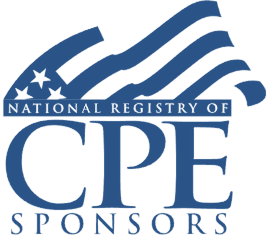Welcome! Save 30% on all CLE, CPE, and Professional Skills webinars, plus 15% off any annual pass with code CYBER2025
About the Course
Introduction
This course will prepare auditors to select appropriate sampling techniques for financial statement audits and discuss the relationship between traditional sampling and data analytics. The speaker will explain the rationale for and technical terms of generally accepted standards for sampling methodologies based on AICPA accounting standards and guides and professional practice.
Description
External auditors must stay up to date on sampling methodologies, as applied to examinations of clients' internal controls or substantive details during financial statement audits. Recent developments that substantially impact sampling practices merit practitioners' attention and study. These include the effects of the pandemic on sampling, the introduction of data analytics and new strategies for effectively auditing revenues.
The current state of the economy continues to affect sampling of inventory, for example, and also raises new considerations for the determination of sample sizes. Additionally, the ability to audit some data by analyzing 100 percent of a population, rather than a sample, is exciting even though it is not new. Moving to higher reliance on evidence from data analytics, however, requires a substantial upfront investment of time and resources, and in some situations may not be practical. The reluctance of peer reviewers to embrace nontraditional auditing approaches leaves some auditing professionals hesitant to move forward. We will explore some simple ways to navigate these issues.
Best practices and insights from professional experience augment technical guidance when it comes to planning a sampling strategy, quantifying a right-sized sample under a given set of client circumstances, achieving the required level of evidence, and deciding what to do with sample results or errors.
Listen as our financial audit veteran lays out the framework to refocus your use of traditional sampling methodologies for financial statement audits and covers unique considerations in the current auditing environment.
Presented By

Mr. Graham is a Certified Public Accountant with more than 40 years of public accounting experience in audit practice and in various National Firm policy development groups. He is a consultant on professional auditing and accounting matters and an author. Until ecently Mr. Graham was a Visiting Professor of Accountancy at Bentley University in Waltham MA. He is a frequent speaker at National AICPA and State Society conferences.
-
BARBRI is a NASBA CPE sponsor and this 110-minute webinar is accredited for 2.0 CPE credits.
Date + Time
- event
Monday, August 14, 2023
- schedule
1:00 p.m. ET./10:00 a.m. PT
- Review of AICPA sampling, risk assessment and revenue recognition guides
- Sampling considerations in the current unsettled economic environment
- The impact of SAS No. 142 (Audit Evidence) and SAS No. 145 (Risk Assessment) on audit strategies
- The audit risk model and its applicability
- Current sampling best practices
- Frequently faced issues and common peer review matters
The panel will review these and other key issues:
- Understanding the implications for audit sampling in the AICPA auditing standards
- Developing best practices from the AICPA sampling, risk assessment and revenue recognition (AU 606) guides
- Creating a well-planned sampling approach that follows AU-C 530 and the audit risk model
- Determining the impact of evidence from data analytics on audit sampling
- Identifying the proper size of a sample needed for a substantive details test or for an examination of internal controls
Learning Objectives
After completing this course, you will be able to:
- Identify alternative statistical and non-statistical sampling methodologies in conducting an audit of financial statements under AICPA standards and guidelines
- Identify the supportable size of a sample needed for a substantive details test or an examination of internal controls
- Understand the requirement to extrapolate misstatements from a sample to the population
- Understand how internal controls and analytics assurance impact audit sampling in achieving low audit risk.
- Field of Study: Accounting
- Level of Knowledge: Intermediate
- Advance Preparation: None
- Teaching Method: Seminar/Lecture
- Delivery Method: Group-Internet (via computer)
- Attendance Monitoring Method: Attendance is monitored electronically via a participant's PIN and through a series of attendance verification prompts displayed throughout the program
- Prerequisite: Three years+ business or public firm experience at mid-level within the organization, preparing and auditing complex financial statements; supervisory authority over other preparers/accountants. Knowledge and understanding of relevant sampling techniques used in financial statement audits. Familiarity with generally accepted and professional practice standards for sampling methodologies, including AICPA accounting standards and guides.

BARBRI, Inc. is registered with the National Association of State Boards of Accountancy (NASBA) as a sponsor of continuing professional education on the National Registry of CPE Sponsors. State boards of Accountancy have final authority on the acceptance of individual courses for CPE Credits. Complaints regarding registered sponsons may be submitted to NASBA through its website: www.nasbaregistry.org.

BARBRI CE webinars-powered by Barbri-are backed by our 100% unconditional money-back guarantee: If you are not satisfied with any of our products, simply let us know and get a full refund. Contact us at 1-800-926-7926 .
Unlimited access to premium CLE courses:
- Annual access
- Available live and on-demand
- Best for attorneys and legal professionals
Unlimited access to premium CPE courses.:
- Annual access
- Available live and on-demand
- Best for CPAs and tax professionals
Unlimited access to premium CLE, CPE, Professional Skills and Practice-Ready courses.:
- Annual access
- Available live and on-demand
- Best for legal, accounting, and tax professionals
Unlimited access to Professional Skills and Practice-Ready courses:
- Annual access
- Available on-demand
- Best for new attorneys
Related Courses

Accounting for Income Taxes ASC 740: OBBBA Implications, Business Combinations, Valuation Allowances
Thursday, February 5, 2026
1:00 p.m. ET./10:00 a.m. PT

Form 990-PF: Meeting IRS Demands for Fiscal, Grant, and Other Data From Private Foundations
Friday, December 12, 2025
1:00 p.m. ET./10:00 a.m. PT

Impact of OBBBA and Recent Legislation on NPOs: Funding Cuts, Deductible Contribution Limits, New Scholarship Credit
Thursday, November 6, 2025
1:00 p.m. ET./10:00 a.m. PT

Identifying Lobbying and Political Activity for Nonprofits: Excluded and Allowed Activities
Thursday, December 4, 2025
1:00 p.m. ET./10:00 a.m. PT
Recommended Resources

Gain a Competitive Edge Through Efficient CPE Strategies
- Learning & Development
- Business & Professional Skills
- Career Advancement


